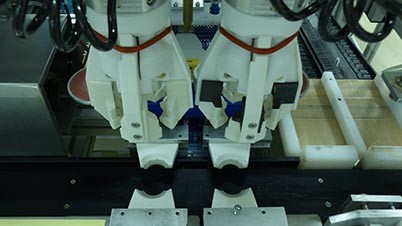Maintenance-free 3D-printed grippers make packaging machines effective
Ahren Xia | December 11, 2020
More flexibility through 3D printing
When an eagle grasps prey, it adapts its grip to the respective size in a lightning fast move. The packaging industry can only dream of this flexibility. Their metal grippers, which for example put the lid on cream jars, are usually limited to a single format. Therefore it often takes weeks for a product change, until the right gripper is made. It is 85 percent more cost-effective and 70 percent faster with robust and lightweight plastic grippers made of iglidur filaments. They come directly from the 3D printing process.
The problem: expensive and long waiting times
Carecos Kosmetik GmbH faced the following problem: if a product had to be changed, the company had to have new grippers made for the packaging machines, which would grip the lids and screw them onto cans. The company had previously opted for elaborate machining of grippers made from aluminium. Not only did that cost up to 10,000 euros per part, it also took six weeks. That is too long a wait in an industrial sector, where at the beginning of the era of the Internet of Things it is increasingly important to be able to economically produce even small batches.
The solution: 3D-printed grippers from iglidur filaments
Due to the high costs and the long production time of the metal grippers, Carecos Kosmetik GmbH initially tried to 3D print the grippers with standard plastics such as ABS and PLA. However, the printing processes did not provide satisfactory results. So they turned to igus and with the tribologically-optimised I150 filament, they found an extremely stable and simultaneously impact-resistant material for 3D printing, with which a gripper can be printed within 10 to 12 hours.
50 times more wear-resistant than standard materials
Almost every element of a gripper is flexible and glides in its movement on surfaces and shafts and pins, so that the individual parts are exposed to constant wear. Metal parts must often be fitted with separate bearings or lubricated in the application. The use of iglidur I150 in 3D printing enabled the company to save up to 85 percent of the cost and 70 percent of the manufacturing time compared to the previously selected aluminium formats. Plastic grippers are seven times lighter than metal grippers. In addition to iglidur I150, igus® offers five other filaments for the printing of wearing parts in a wide variety of application scenarios. These are up to 50 times more wear-resistant compared to standard materials such as polylactide (PLA) and can be processed on all standard 3D printers.


